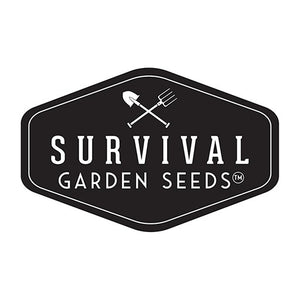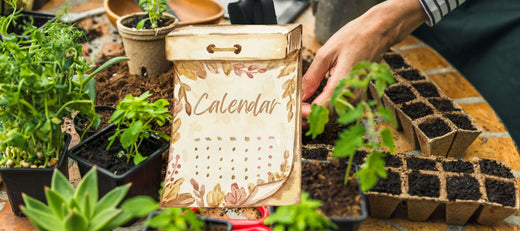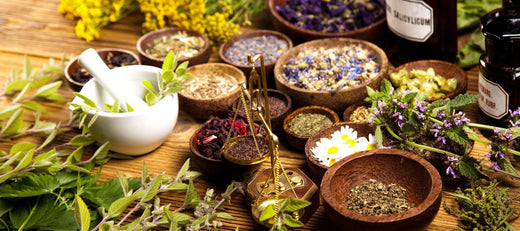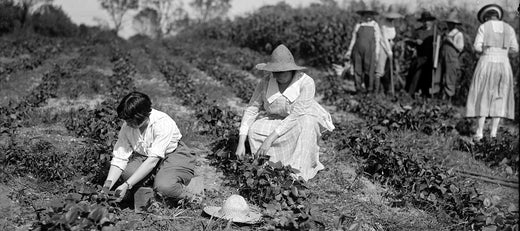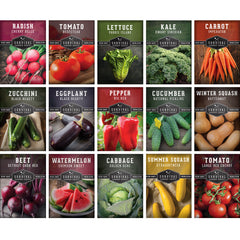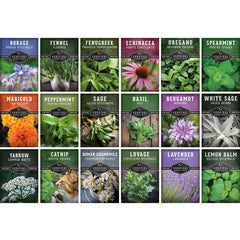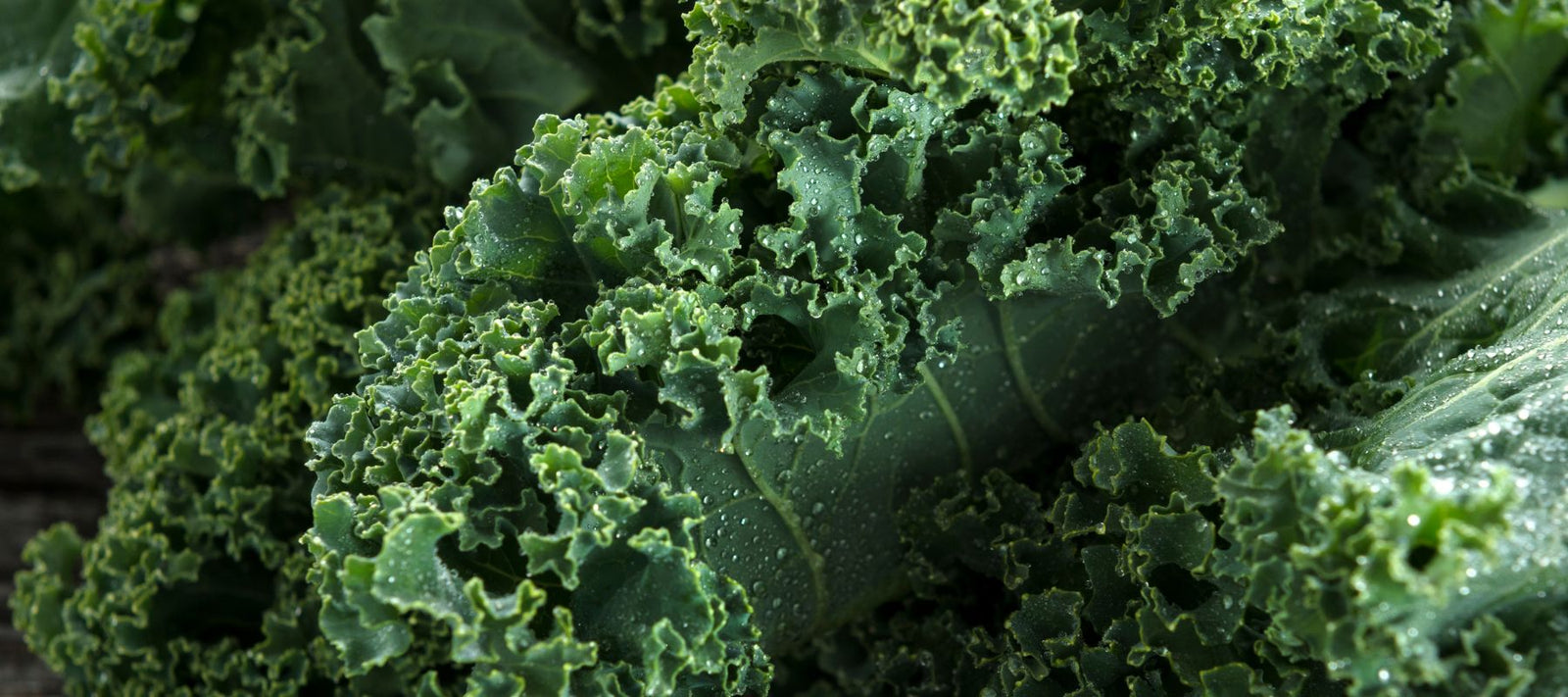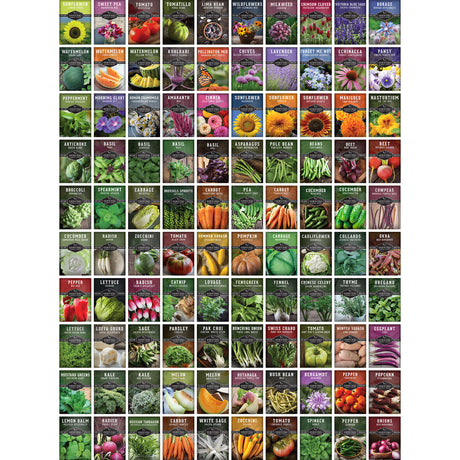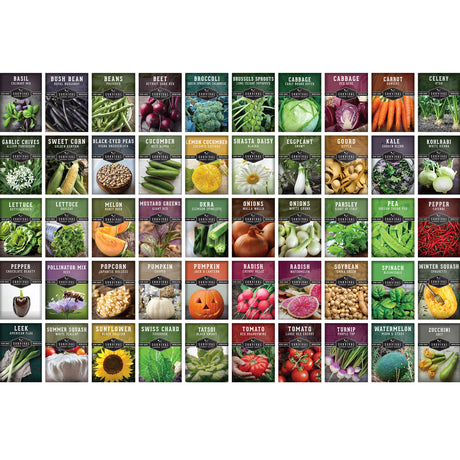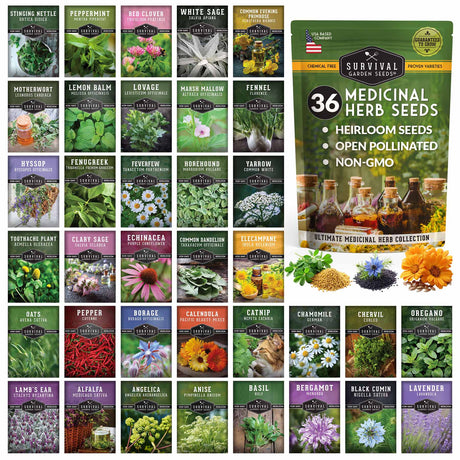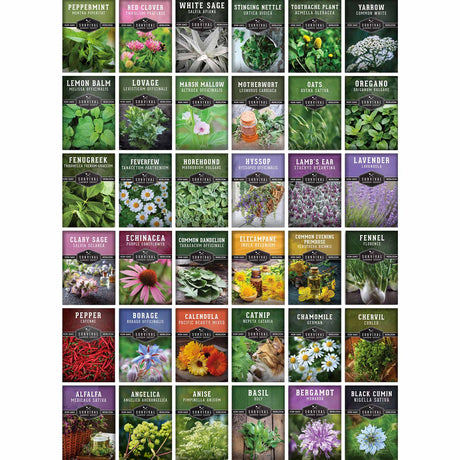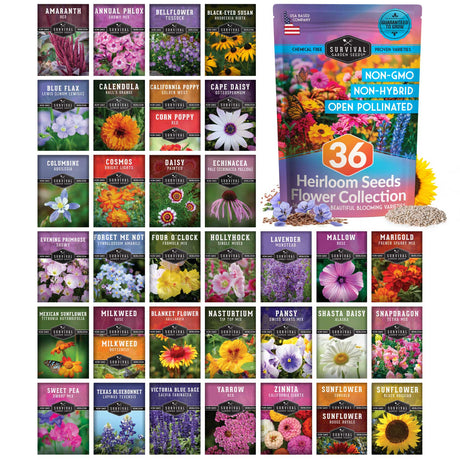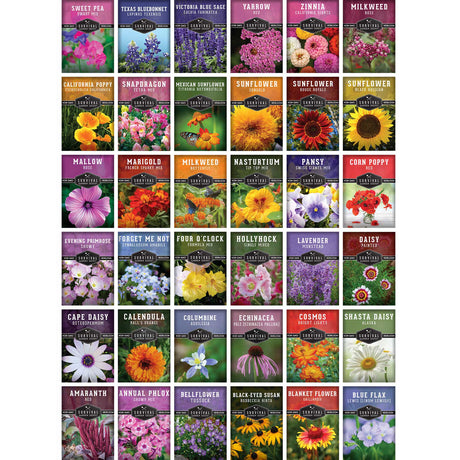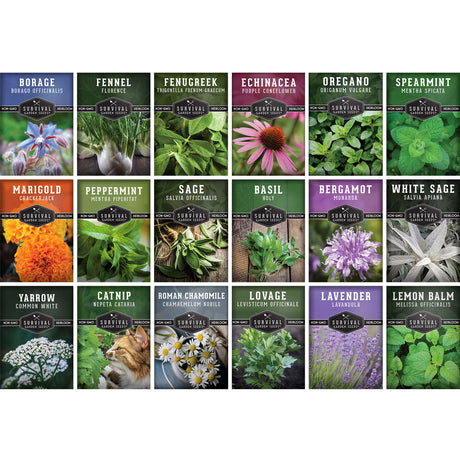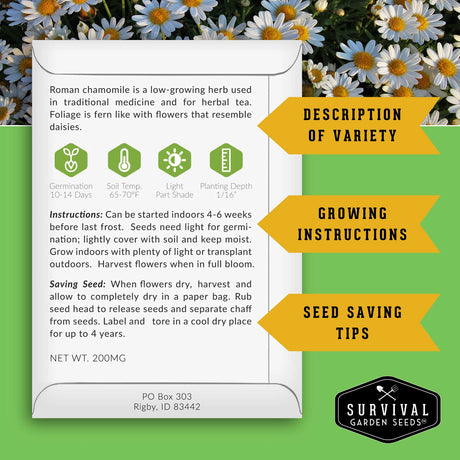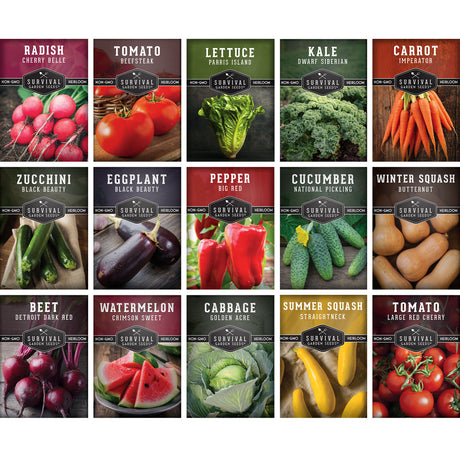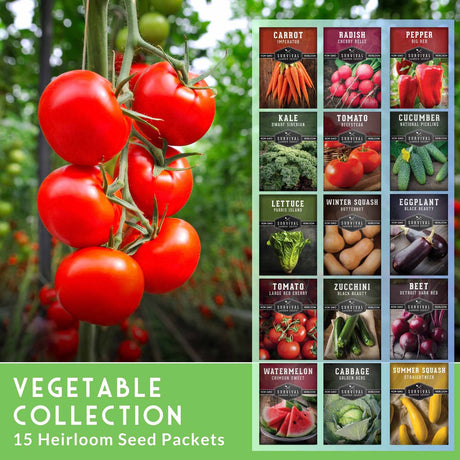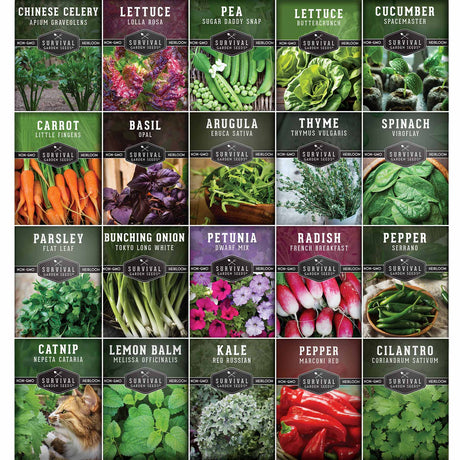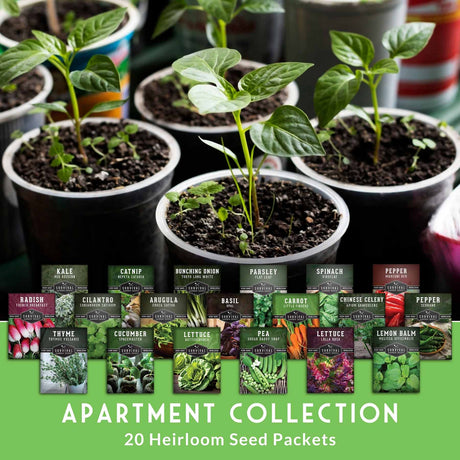Dwarf Siberian Kale is a hardy and nutritious leafy green that’s easy to grow in your home garden. It's nearly impossible to kill, especially in the fall when there's not so much pest pressure. It's particularly well-suited for cooler climates and can thrive in various soil conditions. Let’s look deeper into growing Dwarf Siberian Kale. We’ll cover benefits, ideal growing conditions, planting techniques, care requirements, and harvesting tips.
Kale, the Versatile Superfood

Kale has earned its reputation as a superfood due to its exceptional nutritional profile. Rich in essential vitamins, minerals, and antioxidants, it's a powerhouse of health benefits. It’s also incredibly versatile in the kitchen. You can use it in a wide array of dishes from fresh salads and vibrant smoothies to hearty stir-fries and comforting soups.
Kale is also a remarkably cold-hardy crop, and Dwarf Siberian Kale especially thrives in cooler temperatures when other plants are giving up the ghost. It even benefits from a touch of frost, which sweetens its flavor. This makes kale ideal for extending the harvest season well into fall and winter, giving the gardener fresh greens when many other vegetables have succumbed to the cold.
Benefits of Dwarf Siberian Kale
What distinguishes Dwarf Siberian Kale from other varieties is its exceptional cold hardiness and compact growth habit. This makes this variety especially well-suited for cooler climates and smaller garden spaces, including apartment gardens. Its leaves also have a slightly milder flavor and a more tender texture compared to some of the tougher, more bitter kale types.
Dwarf Siberian Kale is a versatile vegetable packed with health benefits; it’s rich in vitamins A, C, and K, as well as minerals like calcium and iron. It’s perfect if you want to add some nutrient-dense foods to your diet without a lot of extra calories. And don't worry; kids will love kale once they get used to seeing it regularly.
Ideal Growing Conditions
For best results when growing any plant, you’ll need to understand its preferred growing conditions. Dwarf Siberian kale thrives in cooler temperatures, ideally between 60°F and 70°F (15°C to 21°C). It can tolerate frost, which can even enhance its flavor. If you live in a hot climate, partial shade will help your plants survive.
Soil quality is another crucial factor. Dwarf Siberian Kale prefers well-draining, fertile soil rich in organic matter. A pH level between 6.0 and 7.5 is perfect for healthy growth. Amending your soil with compost or well-rotted manure can significantly improve its nutrient content.
Sunlight is also vital for Dwarf Siberian Kale. While it can tolerate partial shade, it performs best in full sun, receiving at least 6 hours of direct sunlight daily. The extra sunlight ensures robust growth and enhances the flavor of the leaves.
Choosing the Right Location
When selecting a location for planting Dwarf Siberian Kale, consider areas that get plenty of sunlight and have good air circulation. Avoid anywhere water tends to pool, as this can lead to root rot and other diseases. Raised beds or containers can be excellent options for controlling soil quality and drainage.
Don't forget companion planting! Dwarf Siberian Kale can thrive alongside other crops like carrots, beets, and onions. Pairing the right plants together can help deter pests and maximize space in your garden.
Planting Dwarf Siberian Kale

Dwarf Siberian Kale can be planted either directly in the garden or indoors for later transplanting. If you're starting seeds indoors, sow them about 6-8 weeks before the last expected frost. Use seed trays or small pots filled with seed-starting mix, and keep them in a warm, well-lit area.
For direct sowing, wait until the soil temperature reaches at least 45°F (7°C). Sow seeds about ¼ to ½ inch deep and space them 12-18 inches apart in rows that are 24-36 inches apart. This spacing allows for adequate airflow and room for the plants to grow.
After planting your kale seeds, water gently but thoroughly to ensure good soil contact. Use a mister or bottom water to avoid dislodging tiny seeds. Keep the soil consistently moist until the seeds germinate, which typically takes 7-14 days.
Transplanting Seedlings
If you started your Dwarf Siberian Kale indoors, it’s time to transplant them once they have developed a few true leaves and the outdoor conditions are suitable. Harden off the seedlings by gradually exposing them to outdoor conditions over a week. This process helps reduce transplant shock.
When transplanting, dig holes that are slightly larger than the root ball of each seedling. Place kale seedlings in the holes, and make sure that the soil level is the same as it was in the pots. Water well after transplanting to help settle the soil around the roots.
Caring for Dwarf Siberian Kale
To keep your Dwarf Siberian Kale healthy, you need to water, fertilize, and manage pests regularly. Kale likes consistent moisture, so water it deeply once a week, or more often if it's dry.
Fertilizing is also important. Use a balanced fertilizer or one with a lot of nitrogen to help it grow green and leafy. Fertilize every 4-6 weeks during the growing season, following the package directions.
Controlling pests is key to healthy kale. Look for common pests like aphids, cabbage worms, and flea beetles. Use natural pest control methods, like neem oil or insecticidal soap, to handle them.
Weed Control
Weeds can compete with Dwarf Siberian Kale for nutrients and water, so it’s important to keep the area around your plants free from weeds. Mulching around the base of the plants can help suppress weed growth while retaining moisture in the soil.
Hand-pulling weeds is an effective method, especially in small gardens. For larger areas, consider using a hoe to cultivate the soil and remove weeds. Be careful not to disturb the roots of your kale plants while doing so.
Harvesting Dwarf Siberian Kale

You can start picking Dwarf Siberian Kale leaves when they are about 6-8 inches long. It's best to pick the outer leaves first so the inner ones can keep growing.
For the best flavor, pick kale in the morning after the dew is gone. Use scissors or garden shears to cut the leaves at the bottom without hurting the plant. Picking regularly helps new leaves grow and extends the time you can harvest.
You can harvest kale whenever you like, throughout the growing season. The leaves can be used fresh in salads, smoothies, or cooked. If you see any yellow or wilting leaves, remove them right away to keep the plant healthy.
Storing Dwarf Siberian Kale
Once harvested, Dwarf Siberian Kale can be stored in the refrigerator for up to a week. Place the leaves in a plastic bag or container with a damp paper towel to maintain moisture. For longer storage, consider blanching and freezing the leaves, which can preserve their nutrients and flavor.
To blanch, briefly immerse the leaves in boiling water for 2-3 minutes, then transfer them to an ice bath to stop the cooking process. After cooling, drain and pack the leaves in airtight containers or freezer bags before placing them in the freezer.
Delicious, Cold-Hardy Siberian Kale
Dwarf Siberian Kale is a great choice for any garden. It's healthy eating, easy to care for, and grows well in many conditions. You can plant it in spring for a summer harvest or in late summer for a fall and winter harvest. By following these tips, you'll have a successful harvest of this tasty vegetable.
No matter your gardening experience, growing Dwarf Siberian Kale is a rewarding journey. Enjoy tending to your plants and eating the fresh, flavorful leaves. You'll be on your way to more self-reliance with every leaf of kale you grow.

